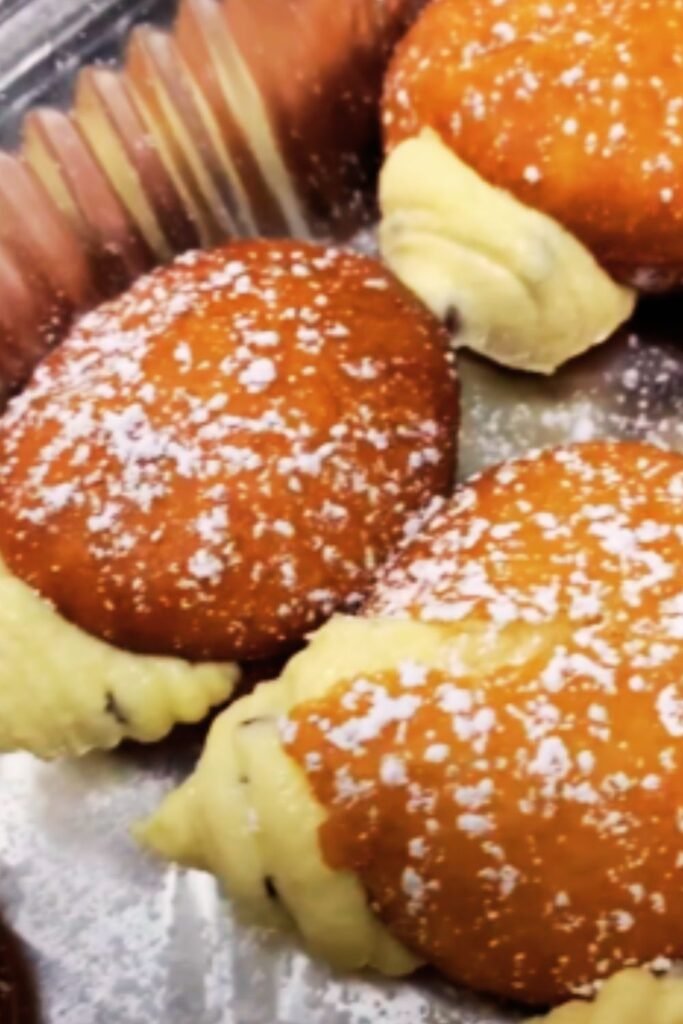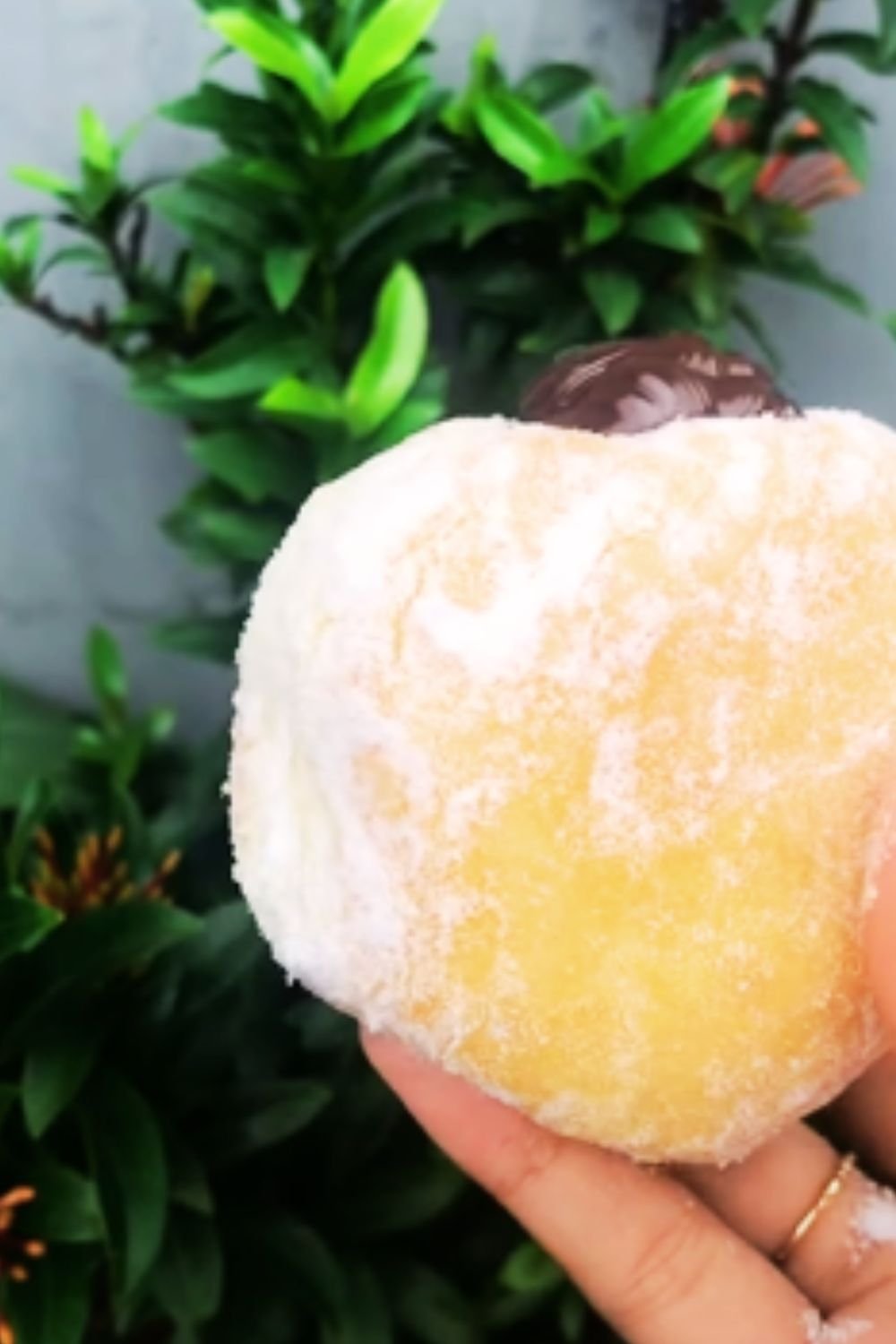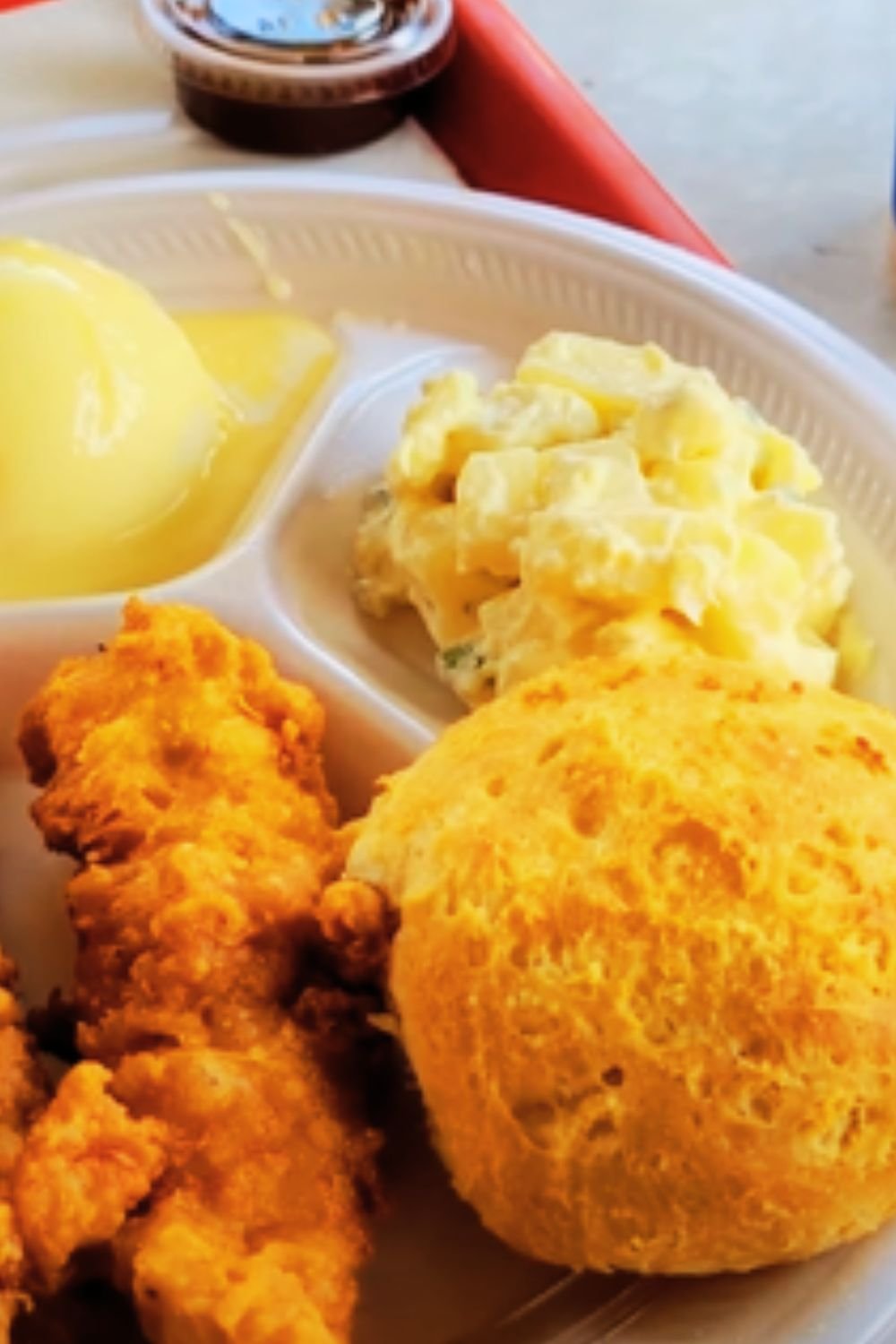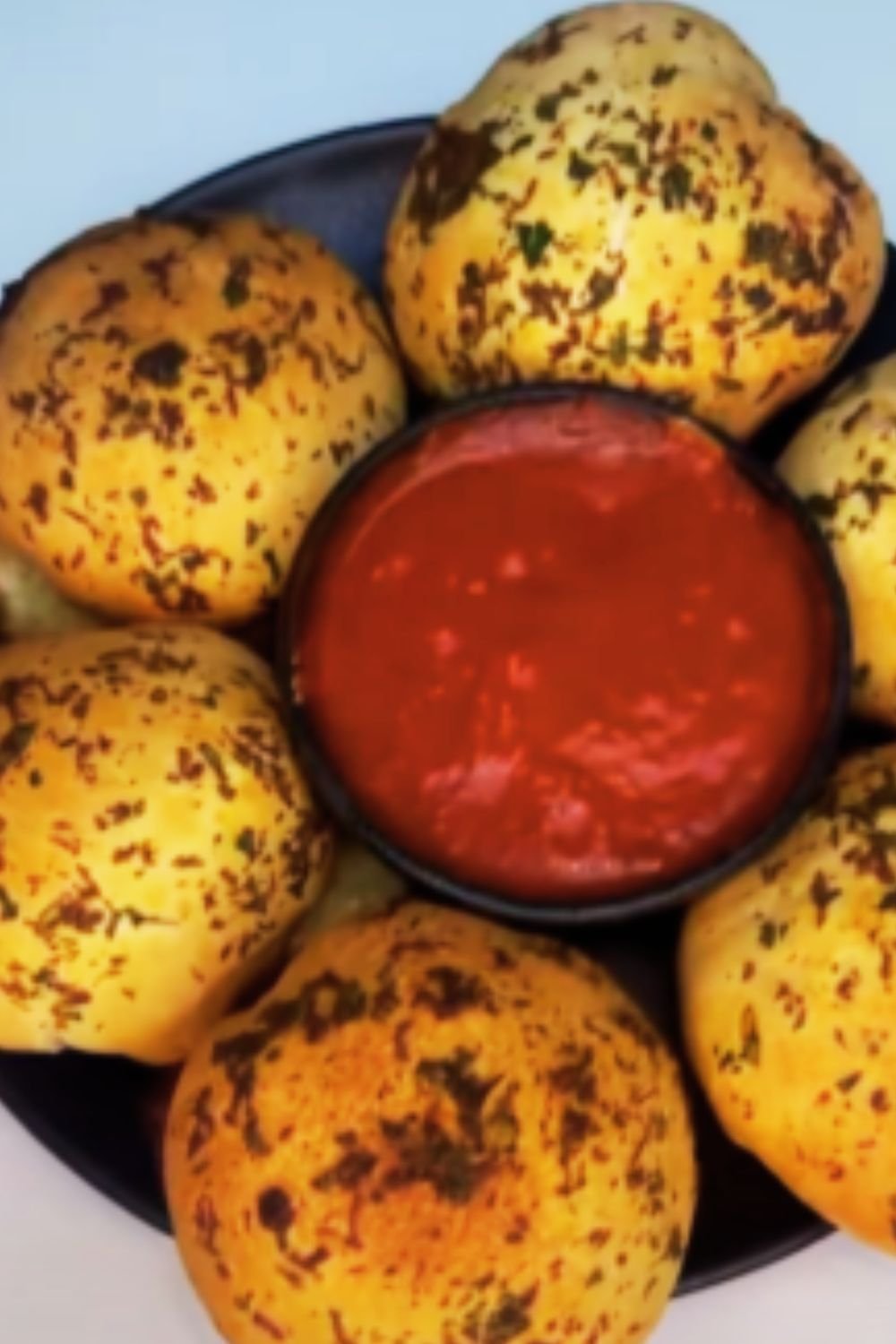There’s something magical about biting into a freshly made bomboloni—that pillowy Italian donut filled with smooth, velvety custard cream. I’ve been perfecting this recipe for years, and today I’m thrilled to share my version of this iconic Italian treat with you. These sweet, fluffy donuts dusted with sugar and bursting with creamy filling will transport you straight to an Italian pasticceria.
What Are Bomboloni?
Bomboloni are traditional Italian donuts that originate from Tuscany but are now beloved throughout Italy. Unlike American donuts with holes, bomboloni are filled—typically with pastry cream (crema), jam, or chocolate. The name “bomboloni” comes from their round, bomb-like shape. They’re a popular breakfast item in Italy, but let’s be honest—they’re delicious any time of day!
When I first tried to make these at home, I was intimidated. But after many attempts, I’ve simplified the process while maintaining that authentic taste and texture. The result? Perfectly fluffy donuts with a rich, smooth filling that will impress even the most discerning Italian nonna.
The Perfect Bomboloni: A Labor of Love
Making bomboloni does require patience and attention to detail, but I promise the results are worth every minute. The dough needs proper kneading to develop gluten (which gives that perfect chewy texture), and the rising time is essential for achieving that light, airy interior.
The most satisfying moment comes when you fill these golden-fried puffs with creamy custard—watching the bomboloni plump up as they’re filled is its own reward. And that first bite? Pure bliss.
Ingredients You’ll Need
For the Dough
- 500g (4 cups) all-purpose flour
- 100g (½ cup) granulated sugar
- 7g (2¼ teaspoons) active dry yeast
- 3 large eggs, room temperature
- Zest of 1 lemon
- 1 teaspoon vanilla extract
- 75g (⅓ cup) unsalted butter, softened
- 125ml (½ cup) whole milk, warm
- 5g (1 teaspoon) salt
- Vegetable oil for frying (about 2 liters/8 cups)
- Extra granulated sugar for coating
For the Crema (Pastry Cream)
- 500ml (2 cups) whole milk
- 1 vanilla bean (or 2 teaspoons pure vanilla extract)
- 6 egg yolks
- 150g (¾ cup) granulated sugar
- 40g (⅓ cup) cornstarch
- 25g (2 tablespoons) unsalted butter
- Pinch of salt
Special Equipment
Before getting started, make sure you have:
- Stand mixer with dough hook (or prepare for some arm exercise!)
- Large heavy-bottomed pot for frying
- Candy/deep-fry thermometer
- 3-inch round cookie cutter
- Piping bag with long filling tip
- Cooling rack
Step-by-Step Instructions
Making the Dough
- Activate the yeast: In a small bowl, combine warm milk (about 110°F/43°C—warm but not hot) with a tablespoon of sugar from your measured amount. Sprinkle the yeast on top and let it sit for 5-10 minutes until foamy.
- Mix the dry ingredients: In the bowl of your stand mixer, combine flour, remaining sugar, salt, and lemon zest.
- Combine wet ingredients: Add the eggs, activated yeast mixture, and vanilla extract to the dry ingredients.
- Knead the dough: Using the dough hook attachment, mix on low speed until the ingredients come together. Increase to medium speed and knead for about 5 minutes until the dough starts to form.
- Add butter gradually: With the mixer running, add softened butter, one tablespoon at a time, waiting until each addition is fully incorporated before adding more.
- Develop the gluten: Continue kneading for another 8-10 minutes until the dough becomes smooth, elastic, and pulls away from the sides of the bowl. The dough will be soft but not sticky.
- First rise: Place the dough in a lightly oiled bowl, cover with plastic wrap or a damp kitchen towel, and let it rise in a warm place for 1.5-2 hours, or until doubled in size.

Making the Pastry Cream (Crema)
While the dough is rising, prepare your filling:
- Infuse the milk: In a medium saucepan, heat the milk with the scraped vanilla bean and its seeds (or vanilla extract) until it just starts to simmer. Remove from heat.
- Prepare the egg mixture: In a heatproof bowl, whisk together egg yolks and sugar until pale and slightly thickened. Add cornstarch and salt, whisking until smooth.
- Temper the eggs: Gradually pour about half of the hot milk into the egg mixture, whisking constantly to prevent the eggs from cooking.
- Cook the custard: Pour the egg-milk mixture back into the saucepan with the remaining milk. Cook over medium heat, whisking constantly, until the mixture thickens and begins to bubble (about 3-5 minutes).
- Finish the cream: Remove from heat, whisk in butter until melted and incorporated. Strain through a fine-mesh sieve into a clean bowl to remove any lumps.
- Chill the cream: Cover with plastic wrap, pressing it directly onto the surface of the cream (this prevents a skin from forming). Refrigerate until completely cold, at least 2 hours or overnight.
Shaping and Frying the Bomboloni
- Punch down and roll: After the first rise, gently punch down the dough to release air bubbles. Transfer to a lightly floured surface and roll out to about ½-inch thickness.
- Cut into rounds: Using a 3-inch round cutter, cut out as many circles as possible. Re-roll scraps once to cut additional rounds.
- Second rise: Place the dough rounds on parchment-lined baking sheets, leaving 2 inches between each. Cover loosely with plastic wrap or a clean kitchen towel and let rise for another 30-45 minutes until puffy.
- Prepare for frying: Fill a heavy-bottomed pot with about 2 inches of vegetable oil. Heat to 350°F (175°C) using a candy/deep-fry thermometer to monitor the temperature.
- Fry the bomboloni: Carefully lower 2-3 dough rounds into the hot oil. Fry for about 2 minutes per side until golden brown. Use a slotted spoon to flip them gently.
- Drain and sugar: Remove fried bomboloni to a paper towel-lined plate to drain excess oil, then immediately roll in granulated sugar while still warm.
- Cool slightly: Let the bomboloni cool on a wire rack until just warm to the touch before filling.

Filling the Bomboloni
- Prepare the filling: Transfer the chilled pastry cream to a piping bag fitted with a long filling tip (or use a bismarck tip if you have one).
- Create an entry point: Using a small knife, make a small incision on the side of each bomboloni.
- Fill with cream: Insert the piping tip into the incision and gently squeeze the bag, filling each bomboloni with about 2 tablespoons of cream. You’ll feel the donut getting heavier as it fills.
- Dust with sugar: Give the filled bomboloni a final light dusting of powdered sugar if desired.
- Serve immediately: Bomboloni are best enjoyed fresh, within a few hours of making them.

Detailed Nutritional Information
For those who like to keep track of their indulgences, here’s a breakdown of what you’re getting in each delicious bomboloni:
| Nutrient | Amount per Bomboloni | % Daily Value* |
|---|---|---|
| Calories | 320 | – |
| Total Fat | 15g | 19% |
| – Saturated Fat | 7g | 35% |
| – Trans Fat | 0g | – |
| Cholesterol | 95mg | 32% |
| Sodium | 150mg | 7% |
| Total Carbohydrates | 42g | 15% |
| – Dietary Fiber | 1g | 4% |
| – Sugars | 18g | – |
| Protein | 6g | 12% |
| Calcium | 60mg | 5% |
| Iron | 1.2mg | 7% |
*Percent Daily Values are based on a 2,000 calorie diet.
Common Mistakes to Avoid
My first few attempts at bomboloni weren’t perfect, and I learned a lot along the way. Here are some pitfalls to avoid:
- Oil temperature issues: If your oil is too hot, the bomboloni will brown too quickly on the outside while remaining raw inside. Too cool, and they’ll absorb too much oil and become greasy. Always use a thermometer!
- Overworking the dough: This can make your bomboloni tough rather than tender. Mix just until the dough is smooth and elastic.
- Rushing the rise: The two rising periods are crucial for developing flavor and achieving that light, airy texture. Don’t try to speed this up.
- Overfilling: While it’s tempting to stuff as much cream as possible into each bomboloni, overfilling will cause the cream to burst out the sides. Stop when you feel resistance.
Variations to Try
Once you’ve mastered the classic bomboloni alla crema, try these delicious variations:
- Chocolate cream: Add 100g of melted dark chocolate to the pastry cream while it’s still warm.
- Nutella-filled: Skip the pastry cream entirely and fill with warmed Nutella.
- Fruit-filled: Use high-quality jam or preserves instead of cream.
- Coffee-infused: Add 1 tablespoon of instant espresso powder to the pastry cream for a tiramisu-inspired flavor.
- Citrus cream: Add 1 tablespoon of lemon or orange zest to the pastry cream for a bright, refreshing filling.
Serving Suggestions
Bomboloni are traditionally enjoyed for breakfast in Italy, but they make a wonderful dessert or afternoon treat as well. Here are some delicious ways to serve them:
- With a strong espresso or cappuccino for an authentic Italian breakfast
- Alongside fresh seasonal berries to cut through the richness
- With a sprinkle of crushed pistachios for texture and color contrast
- Served warm with a scoop of vanilla gelato for an indulgent dessert
- Drizzled with a touch of honey and a pinch of flaky sea salt

Storage Tips
While bomboloni are undeniably best when fresh, here’s how to handle any leftovers:
- Same day: Store at room temperature in an airtight container for up to 8 hours.
- Overnight: Refrigerate in an airtight container, but know that the texture will change slightly.
- Freezing unfilled bomboloni: The plain fried donuts (without filling) can be frozen for up to 1 month. Thaw at room temperature and warm slightly in a 300°F (150°C) oven before filling.
- Pastry cream: Can be made up to 3 days ahead and stored in the refrigerator.
Troubleshooting Guide
| Problem | Possible Cause | Solution |
|---|---|---|
| Bomboloni too dense | Dough didn’t rise properly | Check yeast freshness; ensure proper rising temperature |
| Oily bomboloni | Oil temperature too low | Maintain oil at 350°F (175°C) |
| Cream leaking out | Overfilled or filling too runny | Use properly chilled cream; don’t overfill |
| Dough too sticky | Too little flour or too much liquid | Add flour a tablespoon at a time during kneading |
| Bomboloni browning too quickly | Oil temperature too high | Lower heat; maintain consistent temperature |
| Filling difficult to pipe | Cream too thick or cold | Let cream warm slightly at room temperature |
Questions & Answers
Q: Can I make the dough ahead of time? Yes! You can prepare the dough and do the first rise, then punch it down and refrigerate overnight. The next day, let it come to room temperature for about 30 minutes before rolling and cutting.
Q: Can I bake these instead of frying them? While traditional bomboloni are fried, you can bake them at 375°F (190°C) for about 12-15 minutes. The texture will be different—more like a sweet roll than a donut—but still delicious.
Q: My pastry cream has lumps. What did I do wrong? You may have added the hot milk too quickly, cooking the eggs, or not whisked constantly while cooking the custard. Next time, strain the finished cream through a fine-mesh sieve to remove any lumps.
Q: Why did my bomboloni deflate after frying? This usually happens when the dough hasn’t risen enough before frying or when the oil temperature fluctuates too much. Make sure your dough has properly doubled during both rises and maintain a consistent oil temperature.
Q: Can I use instant yeast instead of active dry? Absolutely! Use the same amount but you can skip the activation step and add it directly to your dry ingredients.
Q: How do I know when the bomboloni are cooked through? Properly cooked bomboloni should be golden brown on all sides and feel light for their size. If you’re unsure, you can cut one open to check—the inside should be fluffy and fully cooked with no raw dough.
A Family Tradition Worth Passing Down
I remember the first time I successfully made bomboloni alla crema. The golden puffs of dough, warm from the oil, the rich scent of vanilla-infused pastry cream, and that first satisfying bite—it was a moment of pure culinary joy. Since then, making bomboloni has become a special tradition in my home, often reserved for Sunday mornings or celebrations.
These Italian donuts may require some time and effort, but they’re a labor of love that’s sure to create lasting memories around your table. There’s something deeply satisfying about working with your hands to create something so delicious from scratch.
So roll up your sleeves, set aside a morning for baking, and treat yourself and your loved ones to these heavenly Italian treats. Trust me—once you’ve mastered homemade bomboloni alla crema, store-bought donuts will never quite satisfy again.
Buon appetito!


